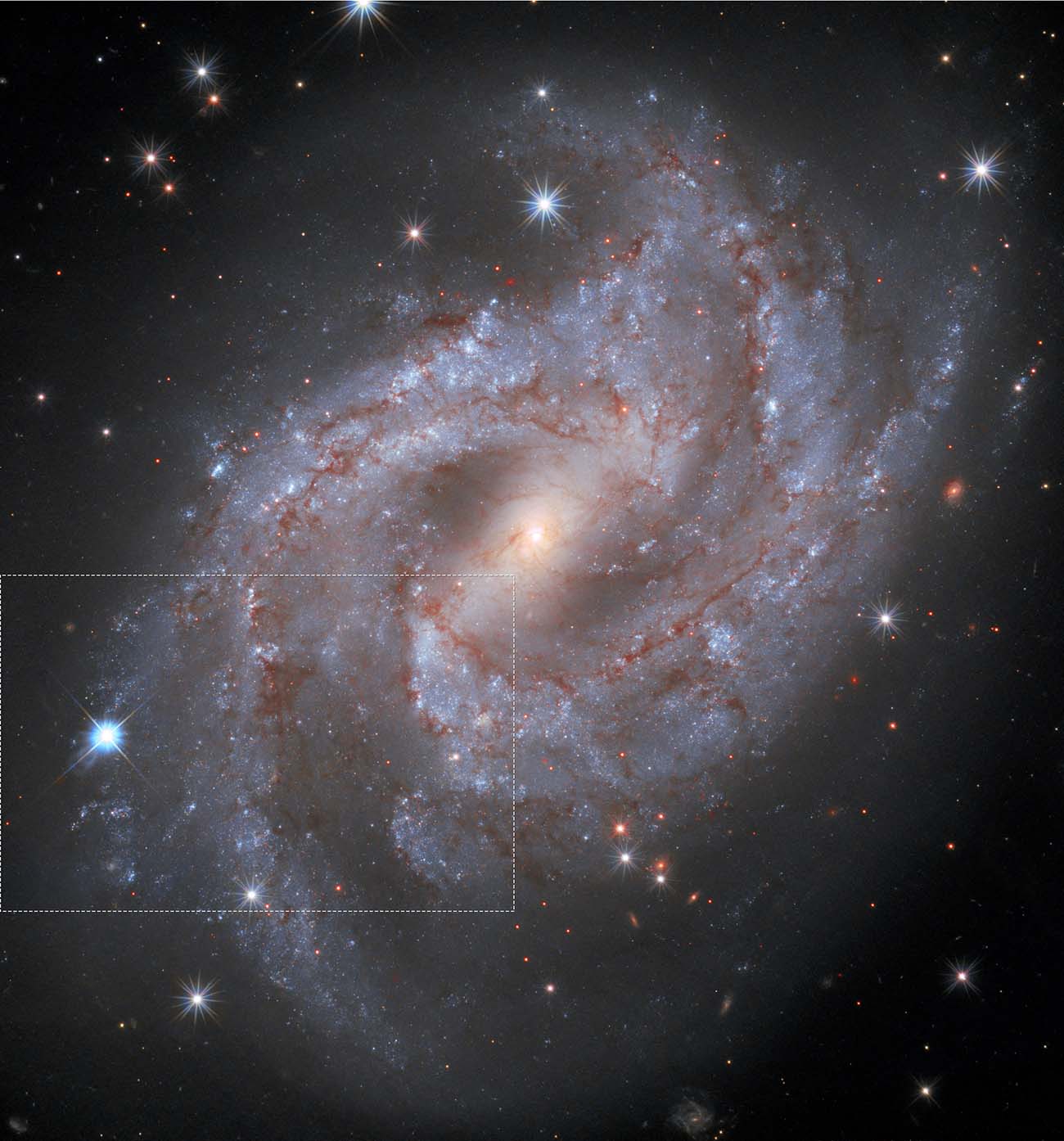STScI: Hubble Watches Exploding Star Fade into Oblivion

Pictured here is the captivating galaxy NGC 2525. Located nearly 70 million light-years from Earth, this galaxy is part of the constellation of Puppis in the southern hemisphere. Together with the Carina and the Vela constellations, it makes up an image of the Argo from ancient greek mythology. Another kind of monster, a supermassive black hole, lurks at the centre of NGC 2525. Nearly every galaxy contains a supermassive black hole, which can range in mass from hundreds of thousands to billions of times the mass of the Sun. Hubble has captured a series of images of NGC2525 as part of one of its major investigations; measuring the expansion rate of the Universe, which can help answer fundamental questions about our Universe’s very nature. ESA/Hubble has now published a unique time-lapse of this galaxy and it’s fading supernova. Credits: NASA, ESA, and A. Riess (STScI/JHU) and the SH0ES team
Acknowledgment: M. Zamani (ESA/Hubble)
DISAPPEARING SUPERNOVA IN DISTANT GALAXY CAPTURED IN HUBBLE MOVIE
Now you see it, now you don’t. Though stars explode at the rate of one per second in the vast universe, it’s rare to get a time-lapse movie of one fading into obscurity. This disappearing act, in a galaxy 70 million light-years away, was captured by the Hubble Space Telescope as part of a program to measure the universe’s expansion rate. More than just providing celestial fireworks, supernovae can be used as milepost markers to measure distances to galaxies. This yardstick is needed to calculate how quickly galaxies appear to be flying apart from one another, which in turn provides an age estimate for the universe. The titanic explosion, which briefly outshined the entire host galaxy, originated from a white dwarf accreting material from its companion star. This pileup of gas eventually triggered a runaway thermonuclear explosion, making the dwarf nature’s own atomic bomb. The energy briefly unleashed was equal to the radiance of 5 billion Suns. This time-lapse sequence of snapshots compresses nearly one year’s worth of Hubble observations into a few seconds.
